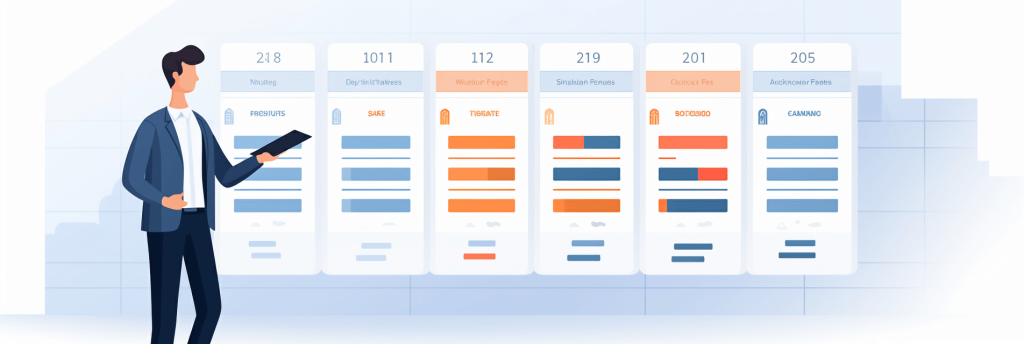Determining the right pricing strategy is crucial for any business, as it directly impacts revenue, profit margins, and market positioning. In today’s competitive landscape, a well-thought-out pricing strategy can be the difference between thriving and merely surviving. Here are key steps and considerations to help you determine your pricing strategy.
1. Understand Your Costs

a. Direct Costs:
These are costs directly associated with producing your product or service, like materials and labor. Knowing your direct costs is essential to ensure that your pricing covers these expenses.
b. Indirect Costs:
These include overhead costs such as rent, utilities, and administrative expenses. It’s vital to allocate a portion of these costs to each product or service to understand your total cost structure.
2. Analyze Your Market

a. Target Audience:
Identify and understand your target customers. What are they willing to pay? What is their perception of your product or service’s value?
b. Competitors:
Examine your competitors’ pricing strategies. Are you in a market where price competition is fierce, or is there room for differentiation?
c. Market Trends:
Stay informed about broader market trends and how they might impact your pricing, such as economic shifts or changes in consumer behavior.
3. Choose a Pricing Model

a. Cost-Plus Pricing:
Simple yet effective, this method adds a standard markup to the cost of the product. It’s straightforward but may not always align with market demand or customer perceptions of value.
b. Value-Based Pricing:
This approach focuses on the perceived value of the product to the customer rather than just the cost. It requires a deep understanding of customer needs and preferences.
c. Competitive Pricing:
Setting prices based on competitors’ pricing strategies. This can be effective but risks a race to the bottom in terms of profitability.
d. Dynamic Pricing:
Adapting prices based on current market demand and conditions. Common in industries like hospitality and airlines.
e. Premium Pricing:
Setting prices higher to signal superior quality or exclusivity. This works well if there’s a strong brand or unique value proposition.
4. Consider Psychological Pricing

Leveraging psychological pricing tactics can influence customer perception and behavior. For example, pricing a product at $19.99 instead of $20 can make it seem significantly cheaper due to the left-digit effect.
5. Factor in External Elements

a. Economic Conditions:
Inflation, currency fluctuations, and economic downturns can all affect your pricing strategy and its effectiveness.
b. Legal and Ethical Considerations:
Ensure your pricing strategy complies with all relevant laws and regulations and adheres to ethical standards.
6. Test and Adjust

a. Pilot Testing:
Before a full-scale rollout, test your pricing in a controlled environment or with a segment of your market.
b. Feedback and Data Analysis:
Collect customer feedback and analyze sales data to understand how your pricing is being received.
c. Continuous Adjustment:
Be prepared to adjust your pricing based on market response, changes in costs, or shifts in the competitive landscape.
7. Communicate Your Pricing Effectively

a. Transparency:
Be clear and upfront about your pricing. Hidden fees or unexpected costs can damage customer trust.
b. Value Communication:
Ensure that your marketing and sales efforts communicate the value that justifies your pricing.
8. Monitor and Evolve

Regularly review your pricing strategy in the context of changing market conditions, cost fluctuations, and evolving customer needs. Being adaptable is key in maintaining an effective pricing strategy.
Conclusion
Determining your pricing strategy is a dynamic and multifaceted process that requires a deep understanding of your costs, market, competition, and customers. By carefully considering these aspects and being adaptable to change, you can develop a pricing strategy that not only covers your costs but also maximizes your profits and aligns with your overall business objectives. Remember, the most effective pricing strategies are those that are reviewed and refined over time, adapting to the ever-changing business landscape.

2 thoughts on “How to Determine Your Pricing Strategy”